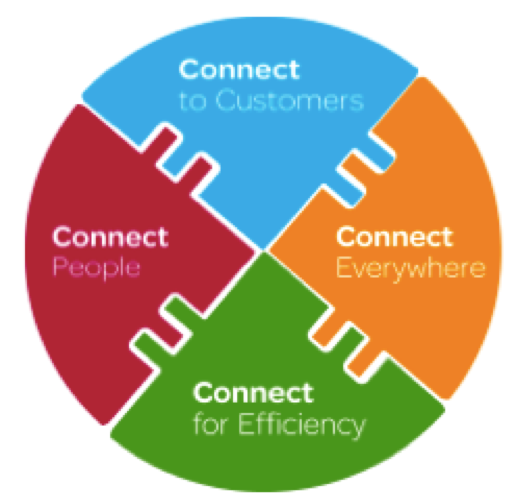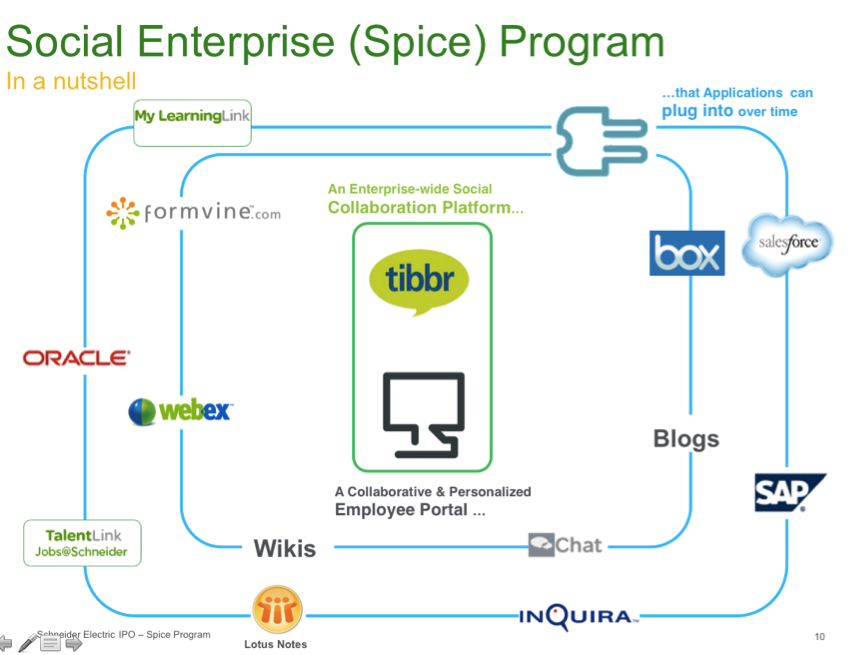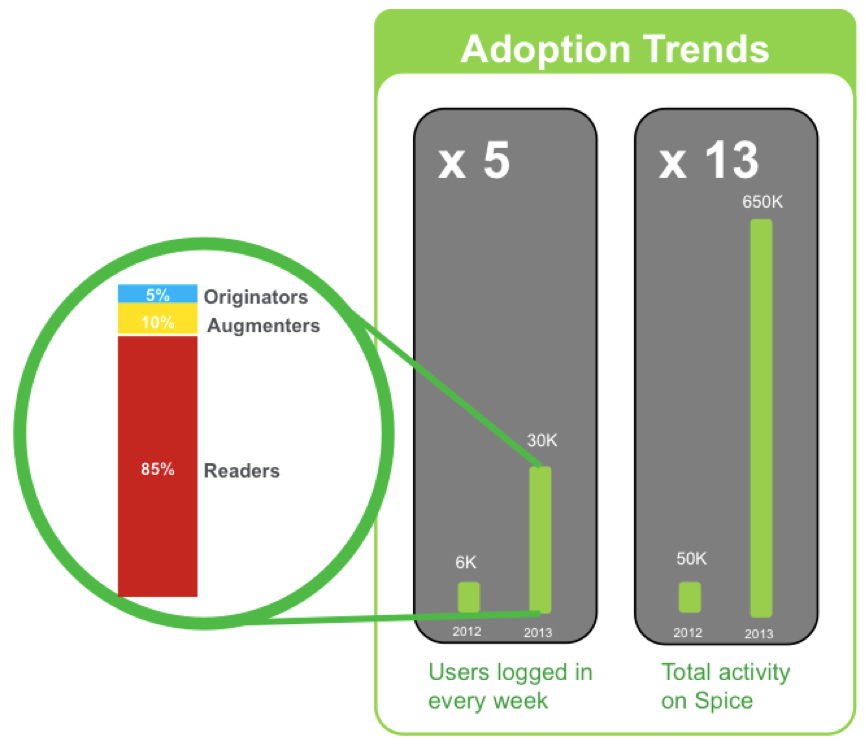Gartner has been tracking enterprise social networking (ESN) for the last couple of years and the Gartner Portals, Collaboration and Content Summit in London brought together the best research, client case studies and opportunities to network with other professionals.
Against a backdrop of skepticism about the success of ESN (in 2010 Gartner estimated 70 percent of IT-dominated social media initiatives will fail) Deepak Bhandary, the Social Enterprise Program Manager for Schneider Electric, presented a different viewpoint. He showed that if a social platform is going to have a chance of success, deployment requires a very organized approach. Schneider Electric’s global rollout to 95,000 people has delivered tangible results and their Adoption Dashboard metrics show that it is sustainable. Within the first few months, the company saw the number of active users grow by 650%.
There approach was not “build it and they will come” or “provide and pray.” Schneider Electric has a very clear view of what they need do to support their high growth global company. Underpinned by the statement “If only Schneider knew what Schneider knows,” they had a strategic vision supported from the very top of the organization.

Failing to plan is planning to fail
The overall branding was very clear: Connect. And to support the program they developed an approach with 3 technology building blocks: Employee Portal, Collaboration Platforms and Integrations.
These 3 building blocks encompassed the new ESN software tibbr, from TIBCO, and integrated to their existing collaboration and operational systems. Without those integrations the social platform would be inert, siloed and isolated.
This is a challenge that many organization face, especially if their social software platform struggles to integrate with all the obvious legacy systems easily out of the box. The comprehensive architecture is best described with a picture:
Start slowly and build success
The team recognized that ESN is a new approach and therefore they need to take a phased approach to rollout. They could make mistakes and learn from them in a safer environment without impacting the entire company. Pilots were identified, which were cross-functional and cross-geographical. This covered 6,000 users. After a relatively short time the pilot users were demanding that they wanted to collaborate with a wider group of people.
When it came to adoption the results were astonishing. In a few months the 6,000 pilot users grew to 45,000 users who had logged on across 114 countries. To date, there have been 95,000 users activated. The trend of adoption is not slowing and you can see from the diagram there are 30,000 users who log on regularly, and now the team are working to encourage the 85% who are readers/followers to play a more contributive role.
Learn more about how Schneider Electric rolled out collaboration software to over 150,000 employees, in this webinar.
Every company using ESN is desperately searching for the magical ROI that will justify their entire global program. But the value is best measured by looking at use cases. The Schneider use cases are:
- Unlock knowledge, help build and retain company expertise, transform implicit knowledge into explicit knowledge and networking across the company
- Find experts; easy access to people’s skill set and experiences
- Energize your team in a collaborative way; develop culture of collaboration and trust, develop team connections, ease information flow, strengthen relationships across geographic and functional boundaries
- Enhance project management; ease collaboration and information exchanges, limit emails, and create a single place to find project information and exchanges
Support not IT mandate
The team took a more patient approach when migrating users from other “competing solutions” that were in existence before the social enterprise platform was rolled-out. They let users migrate when they saw the benefit of being part of a global program and the value of being better connected across the whole of Schneider. While this took longer, it is clearly a far more powerful approach as it reinforces adoption and engagement.
The social program is still growing, but the benefits of the structured approach are very clear. Schneider Electric is a lot closer to knowing what Schneider knows.







